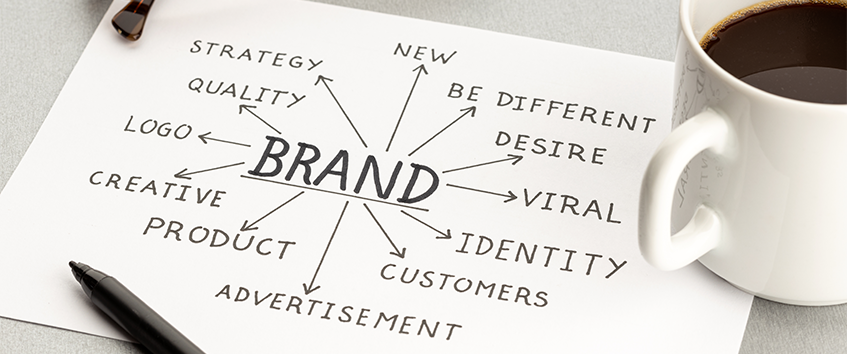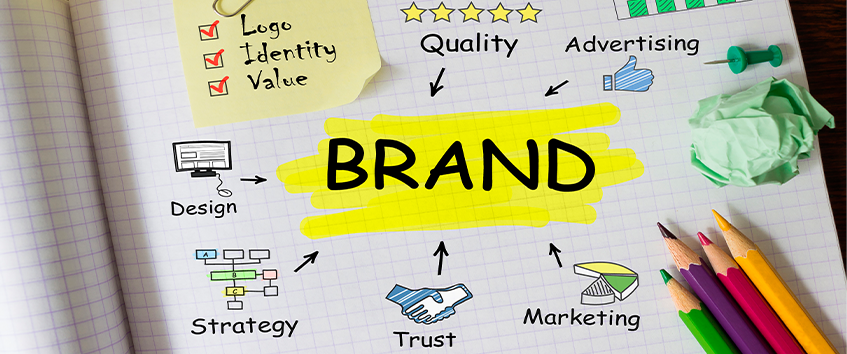From Good to Great: The Secrets to Building a Memorable Brand
August 14, 2023
What do we always remember when we read a story for the first time, look to buy an unfamiliar item, or eat a food we have never eaten before? The way it felt to you. An accurate brand strategy can evoke a positive, long-term emotional response from consumers. It extends beyond the appearance of our product or the quality of our service. It includes everything that characterizes our company or product, from the names of our collections to the logo we chose, from our social media presence to our tastefully created website. So creating a successful brand strategy is essential for any business looking to stand out in a crowded market.
A strong brand strategy helps establish a unique identity, fosters customer loyalty, and enables businesses to achieve long-term success. More than 80% of customers stated that they must trust a brand before considering making a purchase. Great marketing strategy must include that reason for achieving the trust which also involves giving our business a distinctive, cohesive identity. Delivering a consistent message across all media will help us to develop trust, loyalty, and recognition with our target audience.
In this blog, we will walk through the major aspects of branding and the key steps and considerations to create a powerful brand strategy that resonates with our target audience and sets us apart from the competition.
ABOUT BRANDING
Branding is the process of establishing a strong, pleasant image of a business, its products, or services in the minds of the public by fusing aspects such as a logo, design, mission statement, and a recurring theme throughout all marketing materials. Successful branding enables businesses to stand out from the competition and develop a devoted consumer base. So it is not important, it is necessary.

Most Common Elements for Successful Branding
- Brand Purpose
- Brand Identity
- Brand Target
- Brand Values
- Brand Positioning
- Brand Review
1. Brand Purpose
Brand purpose is the fundamental reason for a brand’s existence, beyond making a profit. It is the guiding force behind the brand’s actions, choices, and interactions with its audience. A compelling brand mission is one that is based on the company’s values, beliefs, and desired impact on society or the lives of its customers. It is more than just a list of products or services; it is a statement of the brand’s higher purpose.
2. Brand Identity
The following elements will collectively create a brand’s identity, helping to differentiate it from competitors and resonate with consumers.
- Brand Name: The distinct, recognizable name that represents the brand.
- Logo: A visual symbol or mark that embodies the brand’s identity.
- Tagline/Slogan: A short and memorable phrase that communicates the essence or key message of the brand.

- Colors: Specific colors chosen to represent the brand consistently across all materials.
- Typography/Fonts: The specific fonts for typography used in brand communications, contribute to the overall brand identity.
- Brand Voice/Tone: The personality and style of communication that reflects the brand’s values and resonates with the target audience.
3. Brand Target
A brand’s target in branding is the particular audience or group of people that the brand is trying to appeal to, connect with, and serve through its goods, services, and messaging. To develop effective branding strategies and resonate with the right customers, it is critical to identify a distinct and well-defined target demographic.
4. Brand Values
Brand values in branding are the chief beliefs and principles that guide a brand’s actions, decisions, and interactions. These values define the brand’s character, shape its culture, and influence how it engages with its audience. Brand values provide a framework for consistent behavior and help establish a brand’s identity in the eyes of its customers.

5. Brand Positioning
As part of the branding strategy, brand positioning is identifying and establishing how a brand is viewed by its target market in comparison to its rivals. It involves giving the brand a distinctive and positive image that sets it apart and gives it significance to customers. There are many different brand marketing techniques that you can research and apply. Social media aids a business in advancing its mission, showcasing its value, motivating staff, and forging emotional ties with clients. 57.6% of individuals use social media to select their brand globally. Therefore, social media branding is one of the most successful. A brand’s ability to occupy a distinctive and desirable space in the market through effective brand positioning can boost consumer loyalty, brand recognition, and ultimately company success.
6. Brand Review
Brand review is an essential stage in preserving a brand’s relevance and competitiveness. It refers to an in-depth evaluation of a brand’s present position, effectiveness, and market reputation. It involves looking at many facets of the brand to determine its advantages, disadvantages, opportunities, and threats. A brand review seeks to learn more about the brand’s alignment with its desired image, how consumers regard it, and whether it is successfully achieving its goals.
Considering all these elements of Branding we should develop a brand strategy for our business or products. Developing a brand strategy is essential before starting your business, just as a building plan is prepared before the construction of a building begins.
BRANDING METHODS
Let’s Quickly uncover 4 prevalent Branding Types,
Personalized Branding: Branding that is specifically adapted to each customer. This is what personalized branding is all about. It is similar to a brand that communicates to us personally, anticipates our wants, and knows who we are. Customers become brand advocates because of the warm and personal touch, which makes us feel cherished, understood, and connected.
Co-branding: This is when two reputable brands work together to produce something unique. In other words it is like buddies working together, everyone contributing their special skills. They combine to produce a product or campaign that is more than the sum of its parts and gives customers a novel and engaging experience.

Product branding: The goal of product branding is to make a specific product stand out. It is like the star of the performance is in the spotlight. This strategy gives the product a distinctive identity while presenting its advantages, features, and special selling factors to draw in the target market.
Extension branding: This is the process through which a brand expands its well-known name and good reputation into other product categories or markets. It is like a trusted friend experimenting. Customers can feel more comfortable by trying out the new items because it already has established brand familiarity.
BRANDING TO AMPLIFY ROI
Effective branding goes beyond having a catchy logo or a memorable phrase in today’s tough business environment. When carried out carefully and intelligently, it is a strategic investment that can generate significant returns on investment (ROI).

Here are some ways that branding contributes to maximizing ROI:
Consider the Latest Trends
Performance marketing is a dynamic field where there are frequent changes and updates. Make sure that we are updated with the latest trends and technologies for effective campaigns that boost our ROI.
Track Our Campaigns
Monitor how our marketing campaigns are performing on an ongoing basis and make the required adjustments for better outcomes. Analysis of data from our campaigns can help us to identify areas of improvement.
Generate High-quality Content
Content is the backbone of any marketing campaign. High-quality content which is optimized for searches is a vital ingredient for performance marketing as well. Creating messages that resonate with our audience engages them and leads to conversions.
Identify the Best Traffic Sources
While there are numerous channels through which we can generate leads, it is recommended to focus only on those relevant to our target audience. Setting up performance marketing campaigns over specific channels optimizes our costs.

Attracting and Retaining Customers
If new consumers have a good experience, it improves the likelihood that they will make additional purchases. A strong brand can help in both areas because it is often more expensive to acquire new customers than to keep existing ones.
Notice the competitors
We can learn where our company is succeeding, where we need to make improvements, and which trends we need to anticipate by conducting a competitive study. A competitive study should look at the attributes, market share, prices, marketing, differentiators, strengths, and weaknesses of our rivals as well as their locations, cultures, and consumer feedback.
WHAT ABOUT REBRANDING?
In simple words Rebranding is a marketing strategy that involves changing the logo, name, concept or design of an existing brand. It is a tactical process that means updating and redefining a brand’s positioning, identity, and image. It is a potent instrument that companies employ to adjust to shifting market dynamics, connect with new customers, or give their goods or services fresh life. Rebranding can be a difficult task, but when done carefully, it can have a huge positive impact and create new prospects.
Rebranding is a bold move that needs careful preparation, money, and a distinct vision. When executed well, it may refresh a brand, draw in new clients, and position the company for long-term growth and success.
SOME FINAL THOUGHTS ON BRANDING
Now it is clear that creating a brand strategy is a comprehensive process that requires a deep understanding of our brand’s purpose, target audience, and competition. By defining our brand’s values, crafting a compelling brand message, and developing a consistent brand identity, we can create a powerful brand strategy that leaves a lasting impression on our audience and helps our business to be stable. Remember that a successful brand strategy is not static but evolves with the changing needs and preferences of our customers and the market. Stay adaptable and continuously refine our brand strategy to maintain a competitive edge.

No firm has an unlimited marketing budget, no matter how big it is. Our branding plans depend on our long-term growth in combination with short-term results. It is essential that every business needs to be aware of the importance of branding in marketing.
Connect with Monolith for a successful branding experience that turns the essence of your brand or company into a compelling narrative that engages your audience more deeply.
Branding is a journey, not a destination. So Get Ready to Travel.
